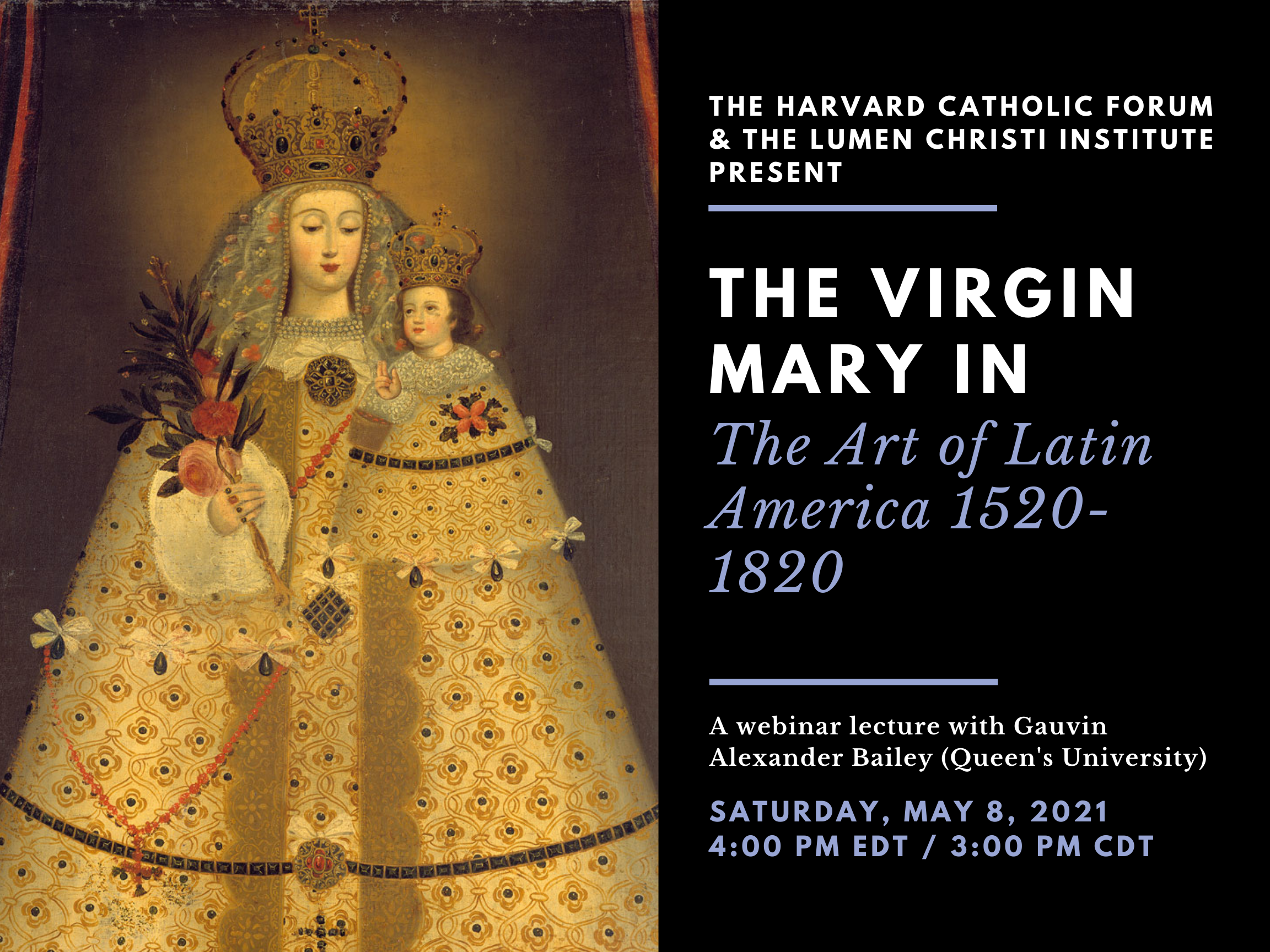This event is presented by the Lumen Christi Institute, co-presented by the Harvard Catholic Forum, and cosponsored by Collegium Institute’s Ars Vivendi Initiative.
Latin Americans in colonial times had an abounding love for the Virgin Mary. During these 300 years, devotions to Mary proliferated widely, particularly among Amerindian groups who identified with her compassion, and her role as an intercessor and mother. The Virgin of Guadalupe is still the most important religious image in Latin America, but many other local devotions sprouted as well, each with distinctive imagery, in large cities and tiny villages, alike from Quito (present-day Ecuador) to Chiloé (Chilean Patagonia). This talk will explore how artists of every background and walk of life transformed imported European images of the Virgin to make her a truly Latin American saint.
Gauvin Alexander Bailey is Professor of Art History and Bader Chair in Southern Baroque Art at Queen’s University, Kingston, Ontario, where he teaches Renaissance, Baroque, Latin American, and Asian art. He received his PhD from Harvard and has published numerous articles and nine books including Art of Colonial Latin America (2005); The Andean Hybrid Baroque: Convergent Cultures in the Churches of Colonial Peru (2010); and Art on the Jesuit Missions in Asia and Latin America, 1542–1773 (1999). He consulted for the US Postal Service on the 2020 Christmas stamp featuring the Virgin of Guápulo.
This event is the second of three in the Faith in Art Series presented by the Lumen Christi Institute and the Harvard Catholic Forum, all cosponsored by Collegium Institute’s Ars Vivendi Initiative.
Date: Saturday, May 8, 2021
Time: 4:00 PM EDT / 3:00 PM CDT
Registration: This event will be held via Zoom and open to the public. To register, please click the button below.
